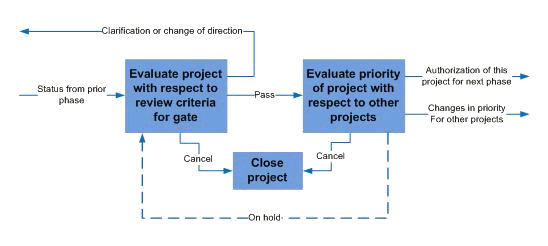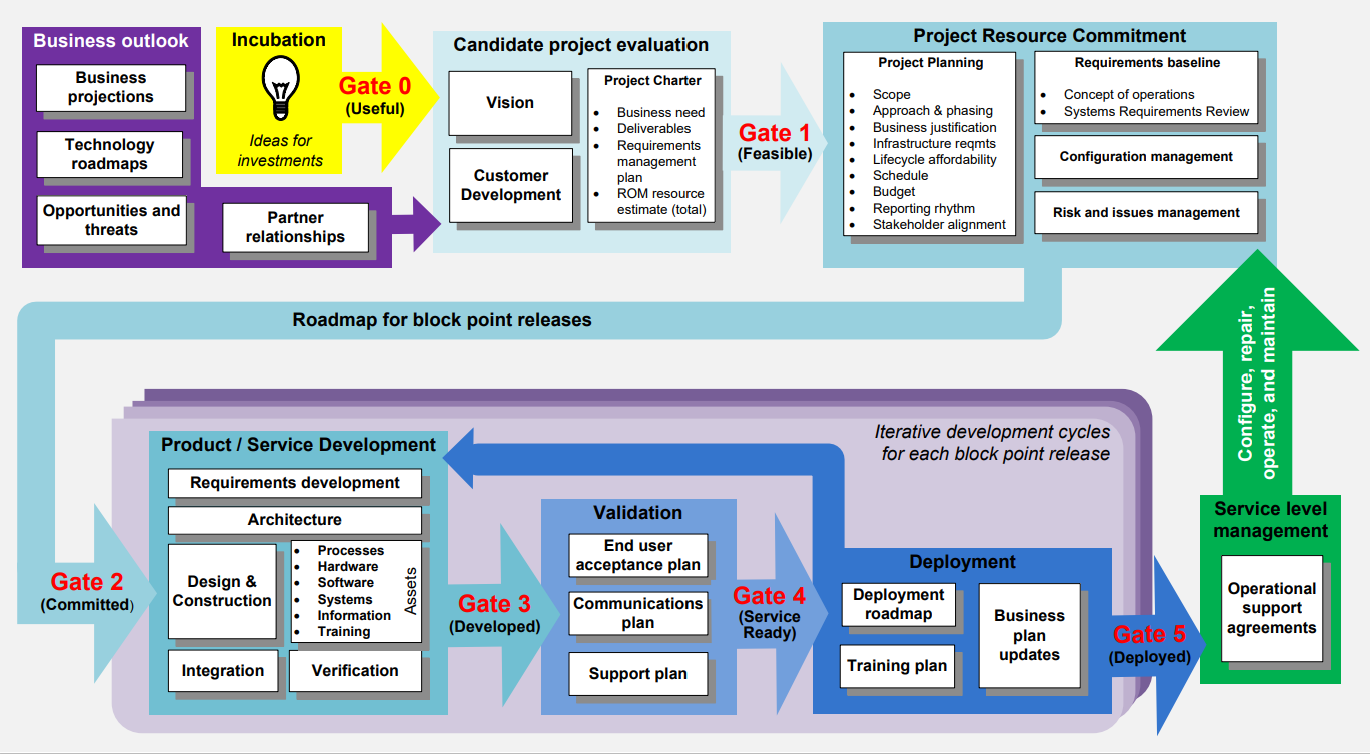Leaders often find themselves swamped by the demands of a large project portfolio, with some projects failing to meet expectations, challenging decisions or issues brought forward from direct reports, and increasing expectations from above. This situation can lead to a neglect of persistent structural challenges that affect several projects and influence positioning for future business, despite these issues not being directly resolvable by the projects themselves. In small endeavors, when this decay occurs at the lowest level of the organization, it is often dismissed as overreach, whereas in major endeavors, it is tagged with the label bureaucracy.
Such situations can tempt leaders to overlook chronic issues until a fire alarm finally forces their attention on some emerging crisis. They should instead ensure they understand and address risks, dependencies, planning gaps, and blocking issues, and provide assurance that their projects are utilizing their resources efficiently and effectively.
Since few endeavors have cash to burn, the aggregate resources available must be allocated within whatever resource bargains the business can afford. Within this context, they must make prudent investments across their full portfolio of projects for the endeavor. Inevitably, the evolving constraints imposed internally and externally can lead to resource shortages on some projects and surpluses on others, despite the best efforts of project teams.
Project resources can be squandered through many pathways, such as ineffective planning, poor oversight, and careless execution. These issues not only drain resources but also undermine efforts to prevent such waste. To conserve valuable resources, it's crucial to standardize priorities and status reporting across multiple projects, fostering trust and promoting positive practices throughout the initiative.
Projects will often be implemented through a series of phases that provide incremental delivery of functionality or quality over time. In such cases, these phases should begin with an unambiguous definition of the minimum viable product for the effort and follow with phases that draw from a balanced set of trade-offs between features, available resource allocations, and product quality over the available time horizon that is dictated by business needs.
Sponsors expect leaders to actively collaborate and steadily lessen the uncertainties tied to project costs, improve the delivery of necessary outcomes, and ensure these outcomes meet the changing needs of stakeholders. If not effectively managed, these uncertainties can compromise a project's success and indirectly affect other projects within the portfolio. To meet these expectations, these leaders must embrace a common framework for communicating and evaluating opportunities and risks.
Review gates can be a key element of such frameworks by providing mechanisms to assure that the decisions and actions associated with such collaboration are understood, accepted, and will be supported by those responsible or affected by such decisions. The primary purpose of these review gates should be to determine whether to authorize continued expenditures on each project as previously planned or instead adjust priorities or resources with respect to others who also need these resources. This is particularly important at the fuzzy front end of new projects when any business's investments rely upon the often-tenuous credibility of project proposals and often-limited evidence available on expected performance for similar efforts.
Since many decision makers are often involved in these choices, reaching a consensus may require a lot of compromises, and inertia is the unfortunately common by-product of disagreements across these parties in how to move forward. The key for decision-makers is to get things right over time and be patient with results while holding project leaders accountable for their commitments.
Gate reviews should be scheduled to support the incremental commitments of resources through each subsequent decision gate. In this way, funding for the project's total lifecycle should depend upon the accomplishments achieved, and an extrapolation of this record of accomplishment going forward. Each gate review should also confirm that quality criteria for that gate have been achieved. These reviews should also verify that prior project deliverables meet expectations, are available, and are consistent with defined decision criteria. Finally, the status of outstanding risks and issues must be reviewed to assure that risks are being adequately mitigated, and to assure that these issues will continue to be mitigated and resolved as the project continues.
In Balancing Opportunities and Risks in Component-based Software Development, Barry Boehm and Jesal Bhuta describe the critical use of 'pass/fail feasibility evidence descriptions' which determine whether continued investments in the project are warranted:
Evidence provided by the developer and validated by independent experts that if the system is built to the specified architecture, it will:
satisfy the requirements: capability, interfaces, level of service, and evolution
support the operational concept
be buildable within the plan's budget and schedules
generate a viable return on investment
generate satisfactory outcomes for all the success-critical stakeholders
Shortfalls in evidence are sources of risk, and all major risks should be resolved or covered by risk management plans. Risk items and risk mitigation strategies are a basis for stakeholder's commitments to proceed.
Such evidence is a critical part of conducting effective gate reviews.
These reviews should be conducted by a cross-functional mix of participants who examine this evidence to determine whether to:
authorize the next phase of the project
cancel the project
place the project on hold until some well-defined condition is satisfied, or
provide clarifying directions to the project team. This frequently means clarifying leadership's intentions and addressing their concerns; in these situations, it typically will be expected that the current gate review which raised these concerns will need to be repeated within a brief period to assure that this feedback has been appropriately incorporated into the project.
Through this focus, gates provide accountability on progress towards delivering on the project's commitments while assuring that the associated risks and issues are being reduced over time. This focus is essential for stakeholders to trust that desired products will be delivered within cost, schedule, delivery, and quality targets. Review results should include a summary of the status of actions identified at prior reviews, a report of the progress being made in mitigating risk over time, and a description of changes from previously established baselines that could affect stakeholders.
The detailed definitions of these gates will always be technology, business, and product dependent. The over-arching philosophy is that they should provide synchronization mechanisms that assure that all the necessary planning and coordination has been accomplished across all performing organizations. Too often, organizations instead chose to employ a 'dog and pony' shows whose primary intention is to assure management that they are making progress, rather than providing firm go/no go decisions for proceeding to the next gate
The picture below is a conceptual depiction of how such a flow might be organized. On many projects, some form of the spiral development process is used which produces an incremental delivery of functionality and performance. Early cycles typically focus on demonstrating feasibility, validating value accessibility, reducing risk, and maturing the concepts of operation. The challenge that this strategy presents to ongoing gated reviews is that the underlying scope of each development cycle (which may be notional early on) may not fit well with customer needs.
For major efforts, the Product/Service Development phase itself may receive special attention at more detailed review gates, ensuring that prior phases produced plans and requirements of sufficient fidelity so that subsequent development can proceed unimpeded.
A representative set of criteria considered at a sample of these development gates might consider the following:
At a Project Resource Commitment review
Are the target outcomes realistically achievable within anticipated constraints?
Do affected organizations understand how they will need to transition their ongoing work to take advantage of envisioned new capabilities?
Will the results be worth the required investments?
At a System Requirements Review
Do all stakeholders concur on the scope of the system?
Are the boundaries of the system crisply defined?
Are target outcomes captured as requirements and objectives?
Are cost and schedule expectations defined and adequate to achieve desired outcomes?
Have plans for lower-level requirements development, verification, and validation been defined and agreed to?
At a System Design Review
Are dependencies and flow across teams achievable and consistent with requirements?
Are design work products adequately defined to enable concurrent design and construction with acceptable rework?
Are processes for tracking and resolving issues during design elaboration available, understood, and accepted?
Are stakeholder concerns about needed resources and production assets acknowledged and manageable with credible mitigation strategies?
At the cascading series of Subsystem Preliminary Design and Critical Design Review(s)
Are features and performance characteristics adequately defined to enable further elaboration and verification?
Are design structures sufficiently defined such that their incorporation can be synthesized and integrated with acceptable rework?
Will available resources be adequate to deliver target outcomes?
Will testing provide needed information in time to incorporate feedback into developmental releases?
To perform such reviews in a consistent fashion, the overall review approach should define:
When gate reviews are expected to be performed
Who has responsibility for organizing and implementing these gate reviews
How the agenda, approach, and participants will be communicated
Where results will be tracked over time
What evaluation criteria must be satisfied to obtain authorization to proceed to the next gate
All performing organizations participating in these activities should align their separate development and planning efforts to these over-arching review milestones. Once solutions have been deployed and are being utilized in operations, products typically enter a sustainment phase. During this phase, an alternative means of oversight must be established, since the work is driven by operational, rather than development, events. The continued support needs to be negotiated and documented in service level agreements, ideally in ways that tie the funding stream for this work back to the organizations that are subscribing to this service. Despite this shift to operations, ongoing visibility of required resources and their associated asset utilization must continue to be monitored over the operational service life product or service. This transparency enhances accountability for the total cost of ownership and provides assurance that its associated resource allocations are provided and aligned with the business's overall objectives. If it is burdensome to demonstrate that these goals are being achieved, something needs adjustment - the methods, the goals, or the people!





